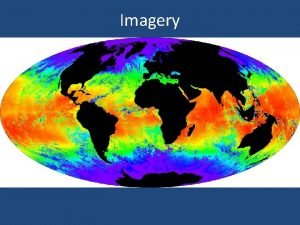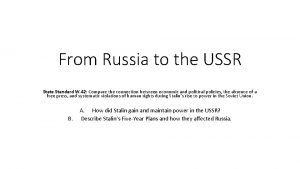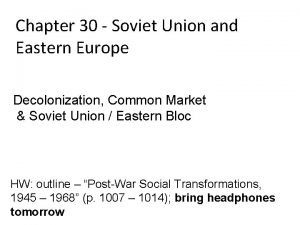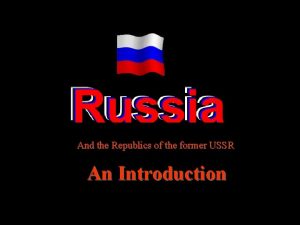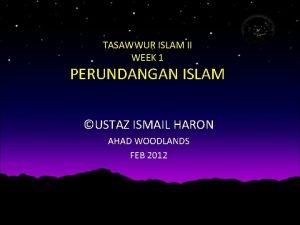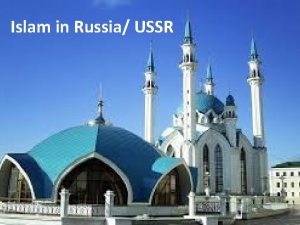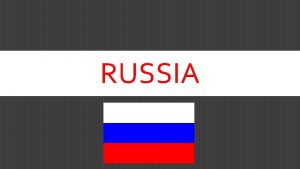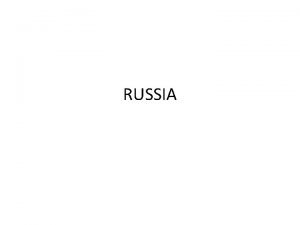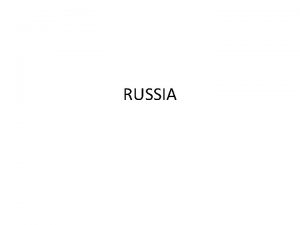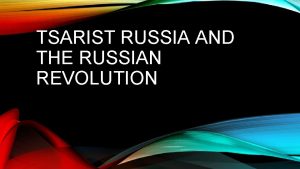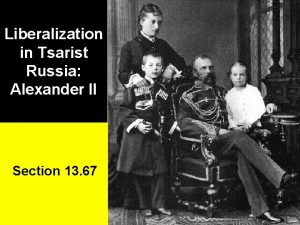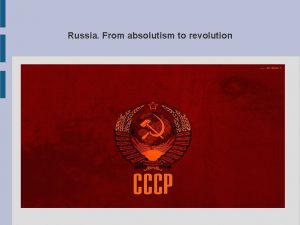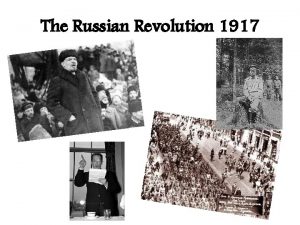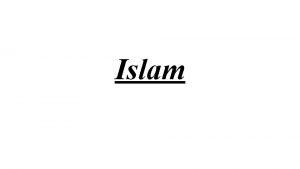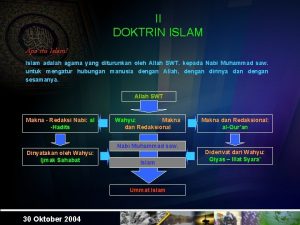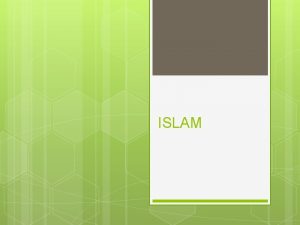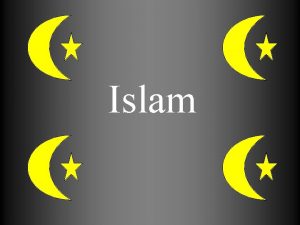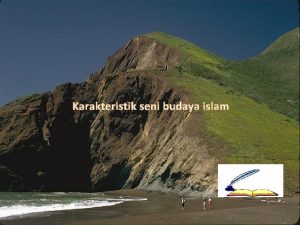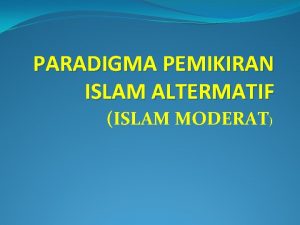Islam in Russia USSR Tsarist Russia Until the




















- Slides: 20

Islam in Russia/ USSR


Tsarist Russia • Until the mid 16 th C Islam was tolerated • Suppression began around the time of Ivan Grozny in 1552 with the battle of Kazan and continued through the reign of Katherine the Great 1762

Methods of Suppression • Assimilation – Education and Military service • Immigration – Land grants for non-Muslims to create Muslim Minorities through immigration • Deportation – Encouraged and forces migration to the Persian and Ottoman Empires – Circassian Diaspora; Turkey, Iraq, Jordan, Syria – Other Caucasian Muslims ended up in Iran; Azerbaijanis, Georgians, Kabardins, Laks

Peter the Great • Negative view towards religion in general • “Great Embassy” • Modernization of Russia through Westernization • Russo-Turkish War 1686 – 1700 Peter sought to have permeant sea access to a warm water port and the establishment of a modern navy




The Great Game 1830 - 1895 • Russia wanted to prevent the British from establishing trade routes into Central Asia • British feared Russia would consume India

• Afghanistan served as a buffer zone between Russia, Persia and British India. Attempts to control the territory ended in failure.

USSR

• Muslims of Russia…all you whose mosques and prayer houses have been destroyed, whose beliefs and customs have been trampled upon by the tsars and oppressors of Russia: your beliefs and practices, your national and cultural institutions are forever free and inviolate. Know that your rights, like those of all the peoples of Russia, are under the mighty protection of the revolution

• Although actively encouraging atheism, Soviet authorities permitted limited religious activity in the Muslim republics. • Mosques functioned in most large cities of the Central Asia • Unlike the Russian Orthodox Christian church, the Muslims of the Soviet Union originally encountered a larger degree of religious freedom under the new Bolshevik rule.

Red Mullahs • Stages of the relationship between Islam and the Soviet authorities. • Open mutual hostility replaced by obligatory Islamic loyalty to the Soviet regime. • Government succeeded in isolating poor and landless peasants of Central Asia and the Volga region from the prosperous Muslim leaders • 'Red mullahs' adjusted to the requirements of the time worked to synthesize it with the ideals of socialism.

Stalin • Under Stalin religion policy changed. Mosques were closed or turned into warehouses • Religious leaders persecuted • Religious schools were closed. • Soviets argued that the hijab was evidence that the Muslim women were oppressed, and began to try and forcibly remove it. • As such it became more popular • Stalin's cult of personality left no place for religion

Afghanistan Again: Cold War • (1978) Saur Revolution, anti communist insurrection • (1979– 89) Soviet–Afghan War • (1989– 92) collapse of Communist Najibullah government • (1992– 96) Afghan Civil War • (1996 to Present) Taliban majority control • US aids Mujahedeen Rebels to fight Soviets • Afghanistan becomes the birthplace of al Qaeda

Islam in the age of Glasnost and Perestroika • Openness, restructuring • Greater permissibility for religious freedom • Where Islam became resurgent in Central Asia, nationalism arose in the caucuses

• Muslim Majority; Dagestan, Adygeya, Chechnya, Ingushetia, North Ossetia, Kabardino-Balkaria and Karachayevo-Cherkessia • Soviet efforts to eradicate religious faith • Official data to the effect that by the 1960 s the Soviet Union had become a land of mass unbelief • research carried out in Central Asia, the Caucasus after 1985 confirmed that 60 to 80% considered themselves Muslims

End of the USSR

Caucuses • Chechen Wars 1990 s 2000 s • War in Syria • Russia increasingly a target of Jihadism • Chechnya is a strong jihadist recruiting ground
 Ussr first satellite
Ussr first satellite How did stalin gain and maintain power in the ussr
How did stalin gain and maintain power in the ussr Soviet satellite states
Soviet satellite states The cold war
The cold war Usa ussr
Usa ussr Ussr
Ussr Ussr first satellite
Ussr first satellite Usa ussr
Usa ussr Igcse history chapter 6
Igcse history chapter 6 The geographic feature most responsible for extensive trade
The geographic feature most responsible for extensive trade Kesan perkembangan ilmu pada zaman abbasiyah
Kesan perkembangan ilmu pada zaman abbasiyah Perundangan islam tasawwur islam
Perundangan islam tasawwur islam Matlamat sistem perundangan islam
Matlamat sistem perundangan islam Số nguyên tố là
Số nguyên tố là Tư thế ngồi viết
Tư thế ngồi viết đặc điểm cơ thể của người tối cổ
đặc điểm cơ thể của người tối cổ Cách giải mật thư tọa độ
Cách giải mật thư tọa độ Chụp tư thế worms-breton
Chụp tư thế worms-breton ưu thế lai là gì
ưu thế lai là gì Thẻ vin
Thẻ vin Cái miệng bé xinh thế chỉ nói điều hay thôi
Cái miệng bé xinh thế chỉ nói điều hay thôi
